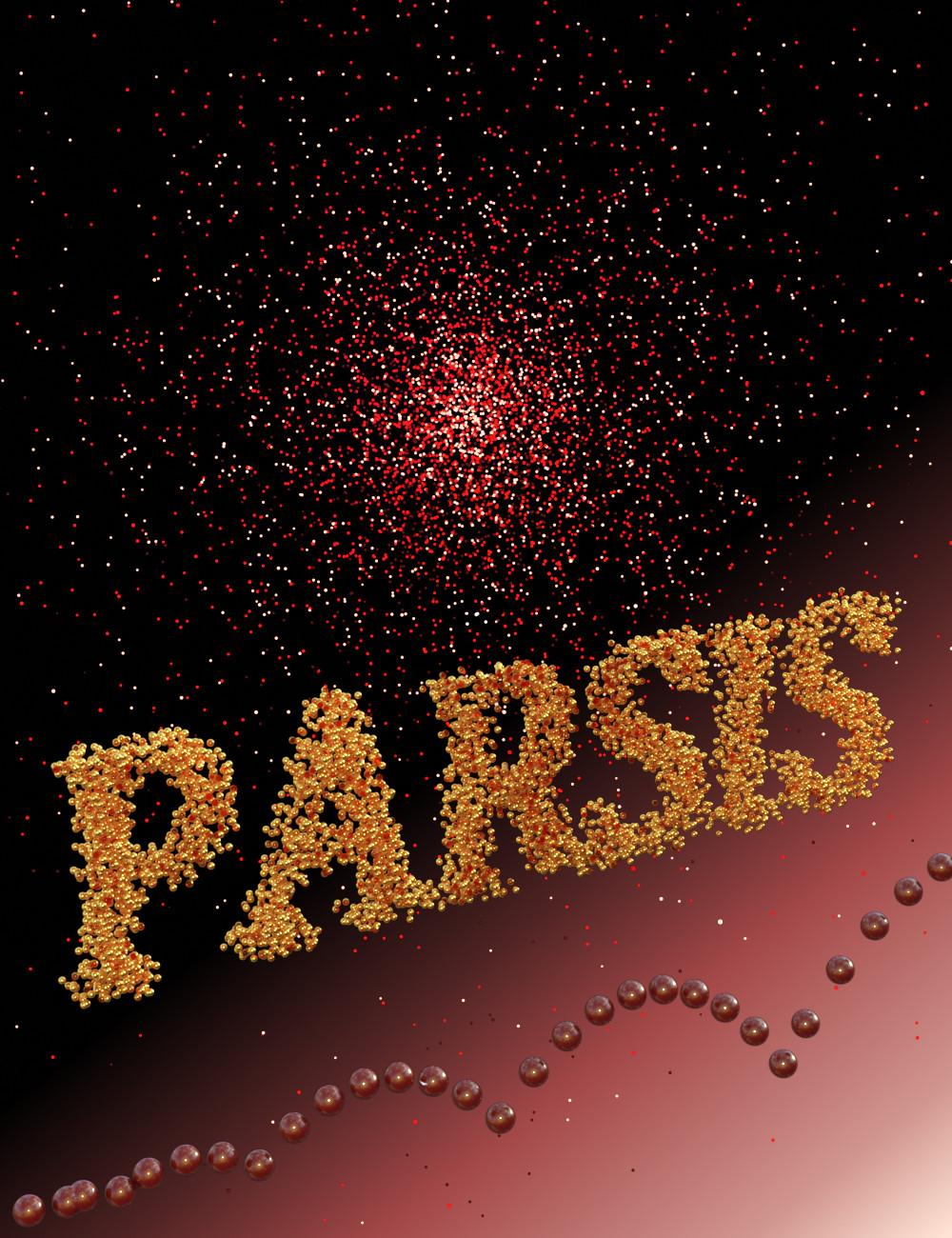[Released] PARSIS: a fast particles system [commercial]
 Alberto
Posts: 1,440
Alberto
Posts: 1,440
PARSIS is a new particles system for DAZ Studio plugin.
Parsis offers a vast world of magic visual effects. Sparks, explosions, projectiles, rays, a ring of asteroids, bubbles, falling rocks, stars... countless possibilities, the limit is your imagination!
Its main features are:
- Very fast simulation (PARSIS uses the ArrayFire accelerated computing library).
- The user can use triangular billboards or any geometric objects as particles.
- Collisions with any geometric node in a scene.
- The sources (emitters) can be a point source, a blob, or any geometric node.
- Forces and force fields to control the trajectories.
- OpenCL acceleration for Windows
- For animations and static scenes.
Compatible with Windows 64 bits and macOS 64 bits.
Some examples:





main.jpg
1000 x 1300 - 453K


popup_05.jpg
1000 x 1300 - 393K


popup_07.jpg
1300 x 1000 - 374K
Post edited by Alberto on



Comments
The example images does not show up, maybe you need to use "Attach a file" option,
when you post a message here.
So cool!
Finally! This could not come too soon.
You wizard! I still like your fluidos plugin!
There are two possible modes: one uses billboards (a geometric node constructed by the plugin). The other mode uses instances of any geometric node the user wants.
Looks potentially interesting, but I´m not sure I 100% understand what it does... how is it different from UltraScatter Pro?
ETA: Watched the video... I´m guessing the main difference is that this product can be used for animation, too?
PARSIS is a particles system, thus it's dynamic. That is, the particles change their position along time following forces and some other rules. They can increase their number and die along this time, can collision with objects and bounce or stop (see the video)
On the other hand, Ultrascate Pro is a replicator system. It's dedicated to finely distribute instances in space, but not in time.
Anyone else missing the serial number for PARSIS ? Just bought it but cannot find it in my serial number list.
Same here. I have opened a ticket with CS.
Me too. Have just put in a support request.
Looks like I am holding out until the issue is solved!
Thank you to those submitting a ticket, I will ride in on your coat-tails :)
Again and again?
Sorry about that.
I've just reported this to the store.
No serial number here, either. But a really cool system, thank you for creating it! I can't wait to use it... tomorrow, maybe, when the serial number's showing up. :-)
Does anyone have received a serial?
It is being worked on.
How does Parsis compare to Sim Tenero's Particle Physics ?
Just going by the description, it allows you to use whatever props you want as particles or sources, while SimTenero's product is far more restrictive and only allows you to use the included props as particles while the emitters are part of the package. SimTenero's solution has some nifty features like changing opacity or color over time, but I always found the implementation far too limiting. If PARSIS works as the promo states, it would allow you to, for instance, select a few tree branches as emitters and have them drop leaves as particles (or the proverbial sakura blossoms rain), which the previous system never allowed you to do. Personally, I am quite excited at the possibilities this opens up, and I am eager to give it a try when I get the chance.
Just a question, Alberto, is there a way to use an image map to determine what part of an object is an emitter? I am thinking about, for instance, a plane with an opacity map where only the visible parts act as emitters. That would be great for all sorts of applications.
Not a map, but you can use the Daz Studio's Geometry Editor Tool to select the vertices from the area you want to act as emitter. Then, the other regions of the object are ignored.
Yes - -- no serial number here either. Waiting to see if the support ticket resolves it...
Hi!
They told me they're working on it.
Just to be sure - this system is for creating, mostly, animations in Daz Studio.
There is no use for it, when creatic static, single frame renders.
PARSIS is useful for animations and for statics scenes either. The plugin has an option for doing the calculations for some simulation time without advancing the frames, thus generating only one frame (stabilization steps option).
That's somehow better and worse at once. I mean, when using a 3D object it will be far more convenient to, for instance, select the geometry of a character's palms than using a map, but when trying to do a radiant magic circle you will need quite a high poly count if you want something detailed... Still, first-world problems compared to not even having the option. Any chance we could get a link to the manual while we wait for Daz to actually do their jobs?
Takes REALLY long this time... I did not even receive an answer to my ticket yet (apart from the automated response), which is rather unusual.
If you install the plugin, the manual will be inside the folder where DAZ Studio is installed, that is: /Program Files/DAZ 3D/DAZStudio4/docs/Plugins/PARSIS A Particles System
And, no, you don't need a very high poly count, because, in fact, the vertices are not the emitters, but it's the area they cover. You need, of course, more than a few vertices to define this area, but not too much.
The serial number just arrived!